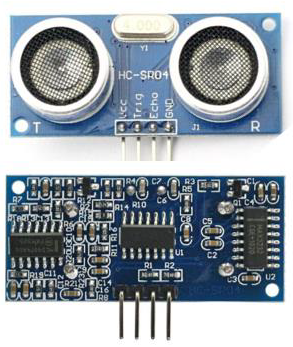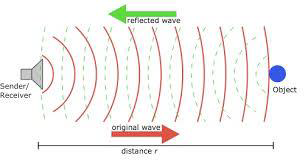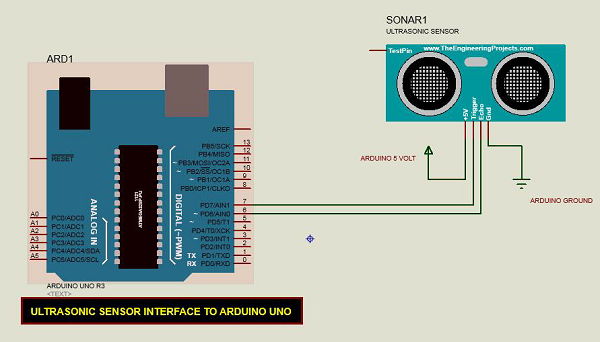Source : https://www.guru99.com/robotics-process-automation-tools.html
Robotic process tools are indispensable for automation of the repetitive back-office processes. There are numerous RPA tools available in the market and choosing one could be a challenge.
Following is a curated list of top 20 handpicked RPA software with popular features and latest download links
Robotic process tools are indispensable for automation of the repetitive back-office processes. There are numerous RPA tools available in the market and choosing one could be a challenge.
Following is a curated list of top 20 handpicked RPA software with popular features and latest download links
1) Another Monday
Another Monday offers a complete automation Ensemble that covers the automation journey from end to end.
The automatic process analysis via their new tool AM Muse can easily be exported to the AM Composer with its intuitive Drag&Drop implementation interface. Unique Split & Pull architecture for maximum efficiency and scalability. Straightforward and centralized administration through AM Console.
Features:
The automatic process analysis via their new tool AM Muse can easily be exported to the AM Composer with its intuitive Drag&Drop implementation interface. Unique Split & Pull architecture for maximum efficiency and scalability. Straightforward and centralized administration through AM Console.
Features:
- Automatic documentation of process logic with AM Muse
- Drag & Drop workflow configuration: no developer knowledge needed
- Quick scaling: Unique ability to pull tasks from database, task transparency due to data collection. Operation at full capacity – little to no idle times
Download link: anothermonday.com (Sponsored)
2) LINX
Linx is a no-code RPA platform that enables the rapid development and deployment of automated processes and tasks.
Linx offers a no-code IDE designer that significantly speeds up development and a hosted server - for fast, no fuss, 1-click deployment.
- Easy-to-use, drag-and-drop IDE designer
- Hosted cloud service for hassle free deployment
- 100+ Prebuilt components for services, programming functions, actions & automations
- Easily Integrate with SaaS tools, legacy systems and any ODBC, OLE DB and NoSQL databases
- Create, host or consume REST or SOAP APIs
- Trigger automations with timers, incoming API calls and message queues
- Typically 5x faster to automate a task than traditional software development
Download link: linx.software (Sponsored)
3) WinAutomation
WinAutomation provided by Softomotive is the world’s best, and longest standing, desktop automation tool, bringing the benefits of Robotic Process Automation to your desktop.
Features:
- Easy to use automation development environment offers an intuitive user-interface with drag & drop functionality and Macro or Web Recorders for building new automations quickly.
- Over 300+ pre-build actions for automating any task on any desktop or web-based application.
- Web Automation supporting web testing, and data extraction across 3 major browsers (IE, Firefox, Chrome).
- Desktop RPA, installed directly on employee workstations avoids server installation or any other significant, hidden costs.
4) HelpSystems
Automate, by HelpSystems, is a comprehensive RPA platform designed to automate repetitive and manual processes across your organization. Automate provides 5x the value of other solutions through its ease of use, stable and robust functionality, and ability to scale your automation strategy.
Features:
- Over 600 prebuilt automation building blocks
- Graphical workflow design brings IT and business teams together
- Ability to integrate with an extensive list of applications
- Intelligent automation capabilities with advanced conditions and trigger scenarios
- Industry leading security, auditing, and integration capabilities
- Centralized visibility, management, and reporting and analytics within distributed networks
5) Automai
Use Automai RPA to streamline your business processes, reduce time and eliminate errors. Part of our Robotic Automation Platform which allows you to use the same automation scenarios for the lifecycle of all the applications used for your business processes. Experience the benefits of a single platform for automated robotic testing, robotic monitoring, and robotic virtual workforce.
Features:
- Completely Code-less - extremely intuitive scenario builder using recorder and user actions.
- Guaranteed to work with all the environments in your business: from Citrix, to fat client, to web applications.
- One platform to serve the automation needs of your Business, development, and operations teams
- Save on training and implementation costs.
6) Automation Anywhere
Automation Anywhere RPA tool combines conventional RPA with intellectual elements like language understanding and reading any unstructured data.
Features:
- Intelligent automation for business and IT operations
- Uses SMART Automation Technology
- Rapidly Automates complex and complicated tasks
- Distribute tasks to multiple computers
- offers scriptless automation
Download link: https://www.automationanywhere.com/
7) UiPath
UiPath is a highly extensible Robotic Process Automation(RPA) tool for automating any desktop or web apps. It allows global enterprises to design, deploy a robotic workforce for their organization.
Features:
- Uipath can be hosted in virtual terminals or cloud environments
- Provide support for a high range of applications to work with, which includes web and desktop applications
- Auto-login features to run the bots.
- Scraping solution which works with.Net, Java, Flash, PDF, Legacy, SAP, with absolute accuracy
Download link: https://www.uipath.com/automate/robotic-process-automation
8) Blue Prism
Blue Prism RPA tools help business operation to be agile and cost effective by automating, manual, rule-based back repetitive office processes. The tool provides a flow chart like a designer with drag and drops feature to automate various business processes.
Features:
- Easily implemented in the short time span of 4 to 6 weeks
- Robust and feature-rich analytics suite
- The tool doesn't require programming skills to implement
- Build highly efficient and automated end-to-end business processes
- Improved Control Room to offer real-time feedback
Download link: https://www.blueprism.com/
9) Pega
Pegasystems automation tool supports all usage scenarios. Pega unifies architecture based on a business rule management system and predictive analytics decision management mechanism.
Features:
- Open APIs that quickly connect to your existing services
- Actionable intelligence helps you to automatically finds processes to optimize
- The adaptive intelligence that learns on the fly
- Captures insights at the desktop. It gets complete details of how work gets done.
10) OpenConnect
OpenConnect automatically discovers, automate, and improve service processes and optimize workforce productivity. The tool helps you to address all types of operational and competitive challenges.
Features:
- Entirely server-based architecture
- Dashboard views with real-time status
- Centralized governance
- Highly secure, encrypted data.
- Advanced connectivity capabilities
Download link: https://www.openconnect.com/
11) KOFAX from Lexmark
Kofax RPA is one of the most efficient way to acquire, enhance and deliver information from any application or data source. This includes a website, portals, desktop applications and enterprise systems without any coding.
Features:
- Helps you to remove errors by Automating Data Gathering and Input
- Increase Operational Efficiency with Intelligent Software Robots
- Monitor and Optimize Processes with Robotic Process Intelligence
- Deploy, manage and execute robots from a centralized server
- Built-In Analytics and Process Intelligence
Download link: https://www.kofax.com/products/robotic-process-automation
12) G1ANT
Gian is a software platform for humans to deploy advanced skill robots in their workplace.
Features:
- Boost Efficiency of your organization
- Precisely measure all the activities performed by the Robot which allows you to analyze each automated process.
- Giant helps you to standardize your business process.
- Employees can put their focus on more creative processes and spend more time in the creative processes.
Download link: http://g1ant.com/
13) WorkFusion
WorkFusion is a (SaaS) crowd computing platform. This RPA software automates the process of monitoring of data feed and helps you to manages crowd-sourced workers from global talent markets.
Features:
- Automate tasks by just press of a button
- Deploy bots as you need, to operate simultaneously for enterprise-scale automation
- Collaborate with multiple users across different workstations
- Automate across your team
Download link: https://www.workfusion.com/
14) Contextor
Contextor is robotic process automation solution offers complete customer view, online help, and shares data between two or more applications.
Features:
- Automate tasks in real-time
- Ensure the proper sequencing of tasks
- Gather and maintain a contextual data collection
- Provide a contextual assistant/help
- The tool can n monitor the processes executed on the workstation.
Download link: https://contextor.eu/en/
15) Jacada
Jacada RPA is a robust RPA tool that helps in Desktop Automation. It allows companies by automating time-consuming and error-prone, repetitive tasks.
Features:
- Automated processes conducted with the highest possible accuracy and unbeaten level of consistency
- Reduced Average Handling Time of your organization
- Helps you to increased first call resolution
Download link: https://www.jacada.com/products/integration-and-automation
16) Kryon
Kryon Robotics process automation tool. It works on the cutting edge of RPA technology, driving innovation in the discovery of suitable automated processes.
Features:
- Helps you to Identify all of your processes that should be automated for time and cost savings
- Empower companies to accomplish their tasks with greater speed, accuracy, and efficiency
- Helps you to automate all your repetitive and time-consuming business processes
- Enhances productivity at every stage of your business processes
Download link: https://www.kryonsystems.com/
17) NICE Systems
NICE is a cloud and on-premises enterprise software solutions. This RPA tool helps any organizations to take firm and accurate decisions based on advanced analytics of structured and unstructured data.
Features:
- Increased Customer Satisfaction
- Improved productivity
- Better resource utilization
- Allows your employees are free to focus on high-value activities
Download link: https://www.nice.com/websites/rpa/
18) Onvisource
Automata RPA solution can capture and process repetitive actions such as filling out online forms, communicating with other systems, and adapting to change or new situations.
Features:
- Automata can quickly assist with large volumes of business or customer transactions
- Robotic Transaction Processing
- Automated Desktop Transaction Recording and Monitoring
Download link: https://www.onvisource.com/robotic-process-automation
19) Redwood Software
Redwood RPA tool offers unattended robotic processes that are easy to create, simple to scale and fast to deploy. It provides many plug-and-play robots which provide instant connections to most standard applications.
Features:
- Automate simple and complex tasks
- Offer a unique network of services which can be used to robotize any process quickly.
- Three-tier landscape with automated promotion and audit trail
- All robotic and human interactions are stored automatically, which offers complete insight of all process activity.
- Allows you to Run, clone and edit bots
download link: https://www.redwood.com/robotics/
20) AutomationEdge
AutomationEdge RPA tool offers many essential technologies for automation of front office, middle office, back office and IT operations.
Features:
- Allows you to automate Excel spreadsheet procedures and activities
- Chabot is capable of interacting with customers and fulfills requests using Artificial Intelligence.
- Front, middle and back office automation
Download link: https://automationedge.com/robotic-process-automation/
21) Foxtrot
Foxtrot By Enable Soft is the faster way to create and run automated tasks for your organization. It offers many easy to use tools which automate tasks in hours and days rather than weeks and months.
Features:
- Designed for business users instead of technical experts
- Extensive library of actions helps you to create your automation.
- An easy method to create and run automated tasks for your organization
Download link: https://www.enablesoft.com/solutions/foxtrot-automation
22) Verint
Verint is a Robotic Process Automation which automates all kinds of repetitive, time-consuming tasks. This solution offers software robots that can completely replace the need for manual processing.
Features:
- Helps you to reduce compliance risk by eliminating human error
- Increase processing capacity and speed
- Allows your employees to conduct quality works
- Helping reduce the errors which occur when employees manually complete difficult processes
Download link: https://www.verint.com/engagement/our-offerings/solutions/workforce-optimization/robotic-process-automation/index.html
23) Visual Cron
VisualCron is an automation, integration and task scheduling tool for Windows.
Features:
- Decreased cycle times and improved throughput
- Reduce errors while significantly increasing efficiency
- Offers great flexibility and scalability to your organization
- Round-the-clock availability
Download link: https://www.visualcron.com/roboticprocessautomation.aspx











